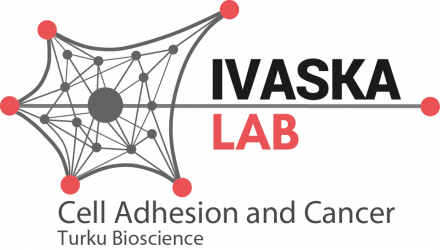Distinct c-Met activation mechanisms induce cell rounding or invasion through pathways involving integrins, RhoA and HIP1 by Anja Mai et al.
J Cell Sci. 2014 May 1;127(Pt 9):1938-52. doi: 10.1242/jcs.140657.
ABSTRACT
Many carcinomas have acquired oncogenic mechanisms for activating c-Met, including c-Met overexpression and excessive autocrine or paracrine stimulation with hepatocyte growth factor (HGF). However, the biological outcome of c-Met activation through these distinct modes remains ambiguous. Here, we report that HGF-mediated c-Met stimulation triggers a mesenchymal-type collective cell invasion. By contrast, the overexpression of c-Met promotes cell rounding. Moreover, in a high-throughput siRNA screen that was performed using a library of siRNAs against putative regulators of integrin activity, we identified RhoA and the clathrin-adapter protein HIP1 as crucial c-Met effectors in these morphological changes. Transient RhoA activation was necessary for the HGF-induced invasion, whereas sustained RhoA activity regulated c-Met-induced cell rounding. In addition, c-Met-induced cell rounding correlated with the phosphorylation of filamin A and the downregulation of active cell-surface integrins. By contrast, a HIP1-mediated increase in β1-integrin turnover was required for the invasion triggered by HGF. Taken together, our results indicate that c-Met induces distinct cell morphology alterations depending on the stimulus that activates c-Met.
PMID:24790222 | DOI:10.1242/jcs.140657
